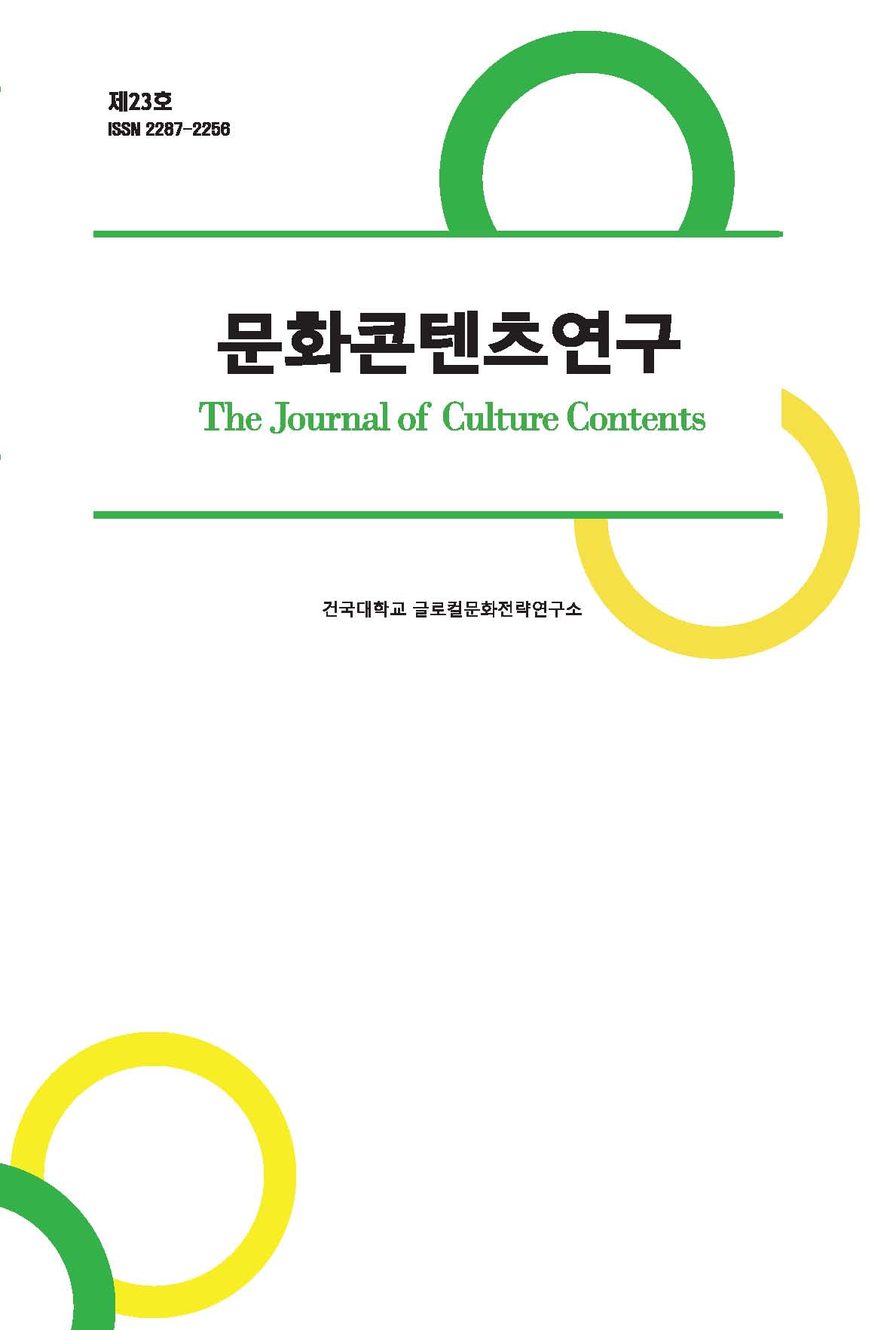Research Article
Abstract
References
Information
Means-End Chain model can link consumers’ cognitive structure to personal values, which explains that the products’(contents’) properties(attributes), the benefits customers can get, and the ultimate pursuit individuals can get are the ultimate pursuit values. By utilizing the model, we can identify the consumers’ ability to select and evaluate their performance, benefits, and connections, and also identify the consumers’ selection criteria. These criteria can be used to refine consumer demand and make specific targets available to them. This paper adopted the model in explaining the pursuit value of cultural contents by female college students in Taiwan, through Laddering, Hierarchical Value Map(HVM). The students showed that differential perceptions of cognitive structures on Taiwanese and Korean contents, even though they pursue love and fun as romanticist consumers, in turn it reveals that consumers’ consumption behavior and cognition are different according to societal context. This study suggests that more broad researches are necessary for analyzing consumption mechanism for different cultural and societal setting.
영상콘텐츠는 문화권에 따라 다양하게 해석하고 소비한다. 소비에 필요한 욕구는 다양한 형태로 개인에게 내재되어 있으며, 욕구는 소비의 강력한 원천이 된다. 소비자의 욕구와 소비대상의 속성의 접점이 생기면 동기가 되고, 이는 소비로 이어진다. 이러한 소비는 낭만윤리에 기반하며 자본주의를 발전시키는 동인이 된다. 소비자의 인지구조와 개인적 가치를 연결지어 설명하는 수단-목적 사슬(Means-End Chain: MEC)이론은 소비자가 제품의 소비 시에 고려하는 속성(attribute)과 이를 통해 소비자가 얻고자 하는 혜택(benefit) 또는 결과(consequence), 개인이 얻을 수 있는 궁극적인 추구 가치(value)를 연결하여 설명하며, 사다리 기법(Laddering)을 활용하여 분석한다.
본 연구는 대만 여대생이 소비하는 영상콘텐츠를 사다리기법으로 분석하여 자국 콘텐츠와 한류 콘텐츠 소비의 특성을 분석하고 추구가치를 파악한다. 수단-목적 사슬이론을 통해 도출된 계층가치지도(HVM) 결과를 살펴보면, 낭만윤리 소비자로서 ‘사랑’과 ‘재미’를 공통적으로 추구하면서도, 대만과 여대생이 속한 사회의 현실과 상황을 반영하여 가치추구의 형태가 다르게 나타났다. 자국의 영상콘텐츠의 소비에서는 배경(속성)-현실공감(결과)-존경(가치)이 중요하게 나왔지만, 한국 영상콘텐츠의 소비에서는 줄거리의 재미와 사랑을 통해 대리만족을 하는 특성이 나타났다.
본 연구는 기존의 흥행요인 중심의 연구에서 벗어나 그동안 연구 관심이 부족했던 지역인 대만 소비자에 대해서 현지조사를 진행하여 결과를 도출했다는 점에서 시사점이 있다. 소비가 개인적인 것이 아닌 사회구성원으로서 영향을 받는 문화소비라는 것을 이해하고자 했으며, 특히 영상콘텐츠 소비를 통한 소비자의 인지구조를 구체화함으로써 소비자가 원하는 속성과 기대 결과의 파악, 수출 콘텐츠로서 한류 영상콘텐츠 제작의 방향에 시사점을 제공하고자 했다.
- 궁선영·유승호, 「소비자는 생산하는가?: 서구 소비패러다임의 변화와 새로운 생비자(New Prosumer)의 출현」, 『사회사상과 문화』 제19권 2호, 2016.
- 동문군, 「대만한류의 발전과 번역현황: 한국 드라마를 중심으로」, 『돈암어문학』 제25호, 2012.
- 문화체육관광부 ․ (재)한국문화산업교류재단, 『해외 한류 실태 조사 결과 보고-아시아, 미주, 유럽, 중동, 아프리카 지역 대상』, 한국문화산업교류재단, 2014.
- 바이만 저, 김용호 역, 『매체의 현실 구성론』, 서울: 커뮤니케이션북스, 2003 (Communicating Unreality: Modern Media and the Reconstruction of Reality, 2000).
- 송기인, 「페이스북에 대한 대학생의 가치 및 가치단계도(HVM): 수단-목적 사슬 이론과 래더링 기법의 적용」, 『광고연구』 제115호, 2017.
- 이정화, 「대만 여대생이 선호하는 대만과 한국의 영상콘텐츠 비교분석」, 『문화교류』 제16권 1호, 2017.
- 이정화, 「문화콘텐츠 소비자의 추구 가치 분석 - 대만과 베트남 여대생의 영상콘텐츠 소비를 중심으로 -」, 서울시립대학교 박사학위논문, 2020.
- 이준웅․장현미, 「인터넷 이용이 현실 위험인식에 미치는 영향: 인터넷 문화계발효과에 대한 탐색적 연구」, 『한국언론학보』 제51권 2호, 2007.
- 한학진․조문식․오주성․서정모, 「수단-목적사슬(Means-End) 이론의 컷오프(Cut-off) 수준과 가치 맵의 관계 분석」, 『한국콘텐츠학회논문지』 제11권 4호, 2011. 10.5392/JKCA.2011.11.4.414
- 황장령, 「대만의 한국문화 현황과 미래」, 『문화과학』 제52호, 2007.
- Aurifeille, J-M. & Valette-Florence, P., “Determination of the dominant means-end chains: A constrained clustering approach”, International Journal of Research in Marketing, 12, 1995. 10.1016/0167-8116(95)00026-X
- Campbell, C., The Romantic Ethric and the Spirit of Modern Consumption, Oxford: Blackwell, 1987.
- Gerbner, G., “Cultivation analysis: An overview”, Mass Communication & Society, 1(3/4), 1998. 10.1080/15205436.1998.9677855
- Gutman, J., “A means-end model based on consumer categorization processes”, Joumal of Marketing, 46, 1982.10.2307/3203341
- Reynolds, T., & Gutman, J., “Laddering theory, method, analysis, and interpretation”, Journal of Advertising Research, 28(1), 1988.
- Reynolds, T.J. & Olson, J.C., “Understanding consumer decision making: The means-end approach to marketing and advertising strategy”, International Journal of Organizational Analysis, 10(1), 2001. 10.4324/9781410600844
- 劉淑棻,「好戲價到 韓劇篇 韓劇流侵 搶搶滾 劇情ㄅㄧㄤˋ 星光亮 俗擱大碗」,『民生報』 ,2000.08.24.
- 中華民國統計資訊網, https://www.stat.gov.tw/
- 亞洲週刊, 2001.06.24, http://home.pchome.com.tw/home/chainpyo/ page3/new2001/ 20010624yzzk.htm
- Publisher :Research Institute of Creative Contents
- Publisher(Ko) :글로컬문화전략연구소
- Journal Title :The Journal of Culture Contents
- Journal Title(Ko) :문화콘텐츠연구
- Volume : 20
- Pages :185-211
- DOI :https://doi.org/10.34227/tjocc.2020..20.185



 The Journal of Culture Contents
The Journal of Culture Contents





